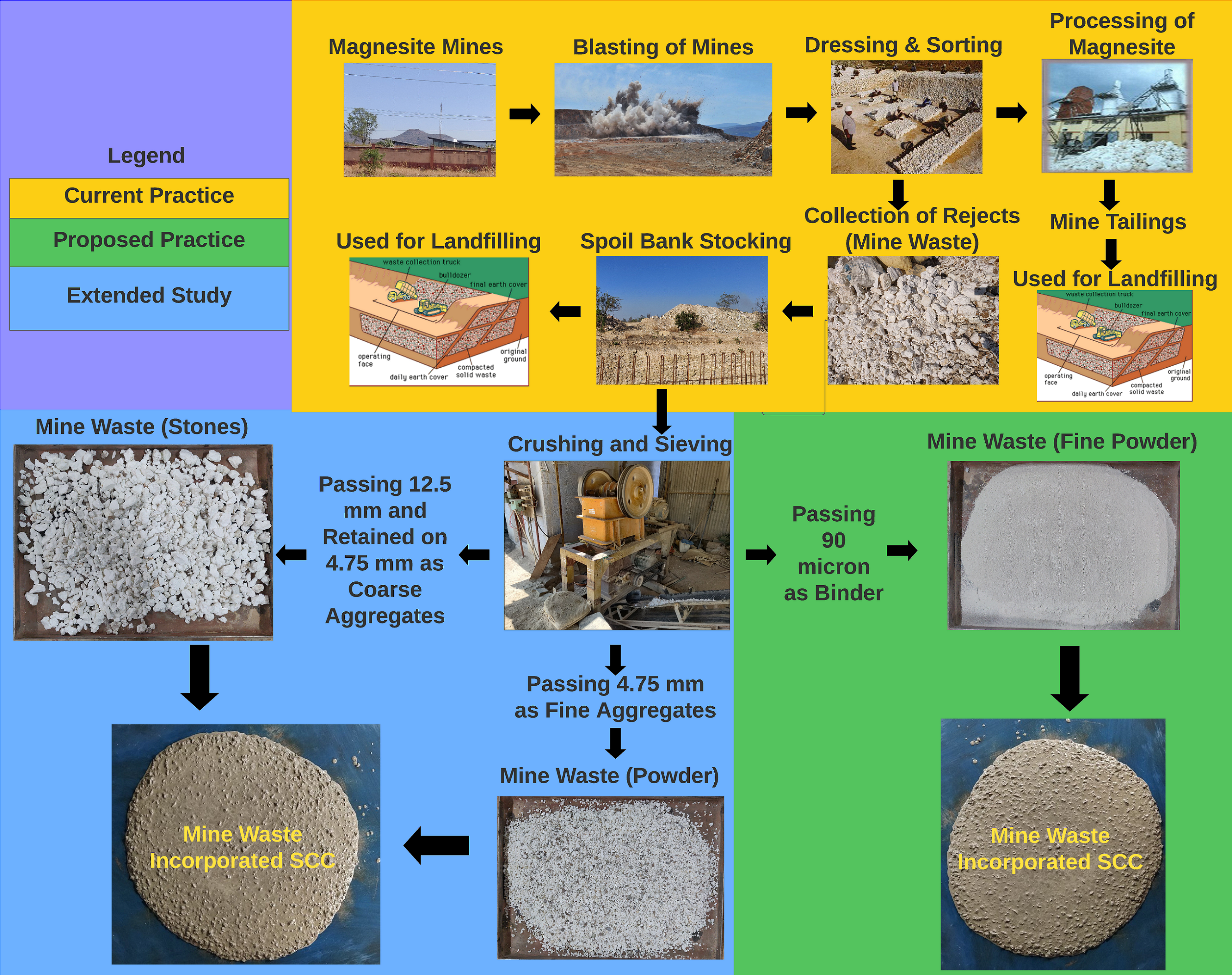
Mine waste management has become a global concern due to its environmental and health impacts, as well as the high cost of disposal. Recent advancements focus on recycling mine waste into resources using effective conservation methods and waste management systems. The building sector, a major consumer of natural resources, has seen studies on using waste materials in concrete. This study examined the feasibility of replacing cement with mine waste in two phases - binary blend (cement + mine waste) and ternary blend (cement + fly ash + mine waste) at 10%, 20%, and 30% doses. The study evaluated fresh properties like slump flow, T50 slump, V-funnel, J-ring, and L-box, and hardened properties like compressive, splitting tensile, and flexural strengths. It also investigated microstructural characteristics, cost, energy impact, and CO2 emissions. The results showed good performance in fresh characteristics for almost all mixtures but failure in hardened properties. The achieved strength was backed by microstructural analysis. Binary blended SCC reduced costs by 5%, energy by 25%, and CO2 emissions by 28%, while ternary blended SCC cut costs by 8%, energy by 32%, and CO2 emissions by 36%.
Total file downloads: 17